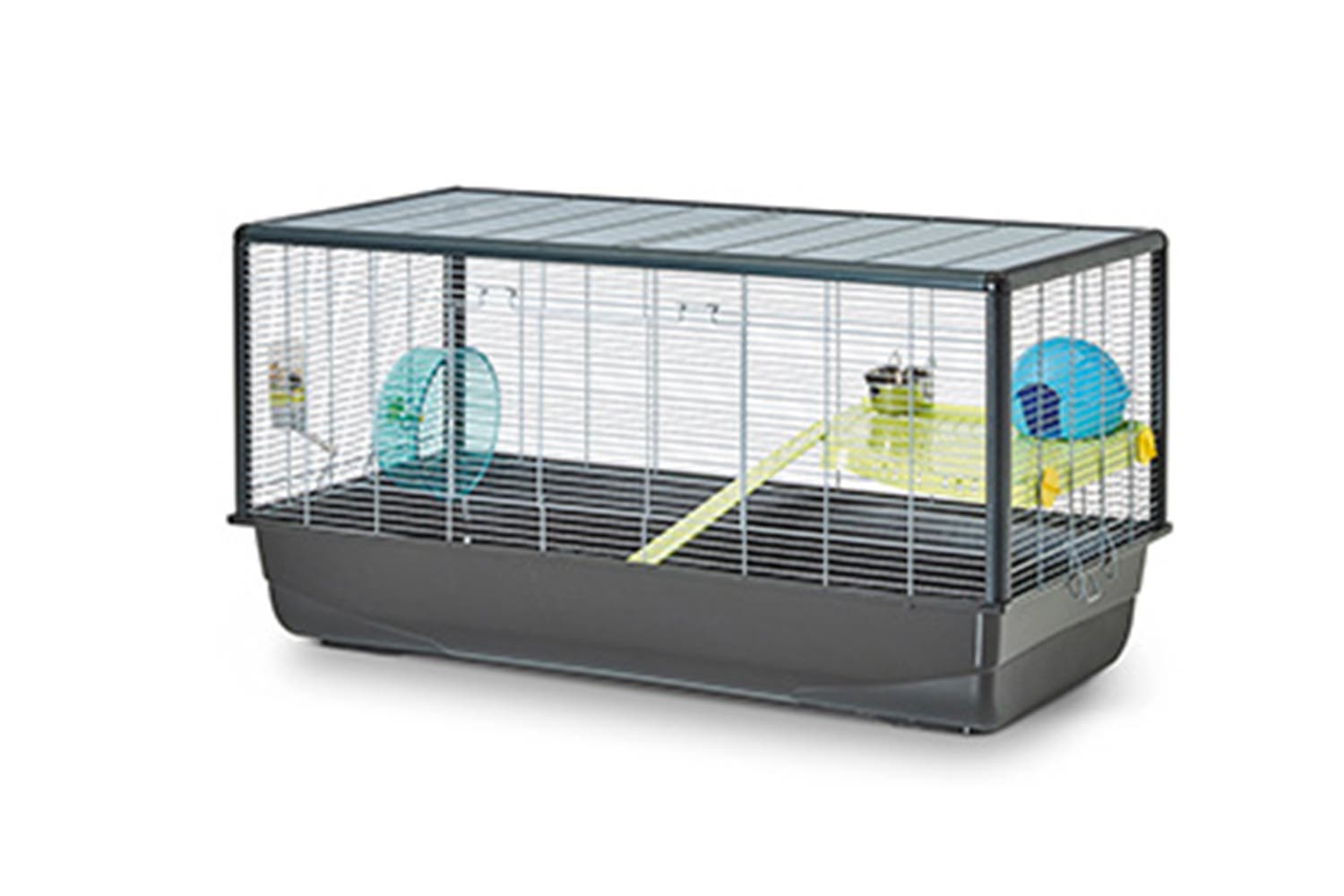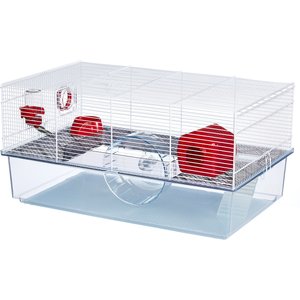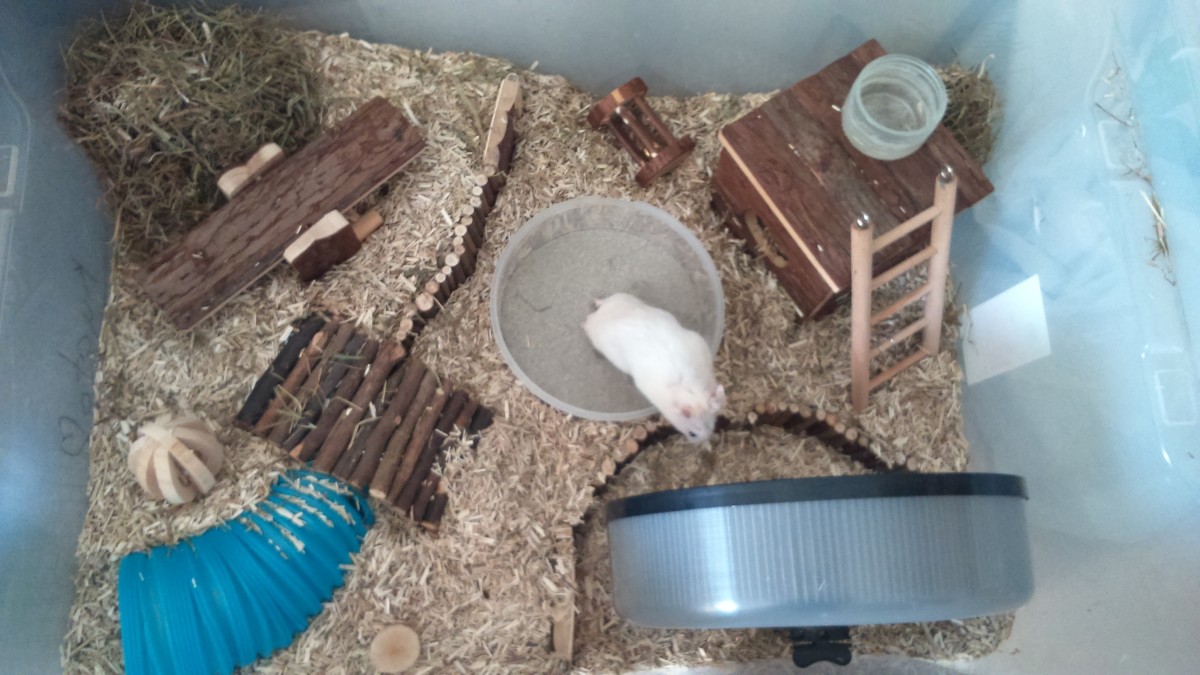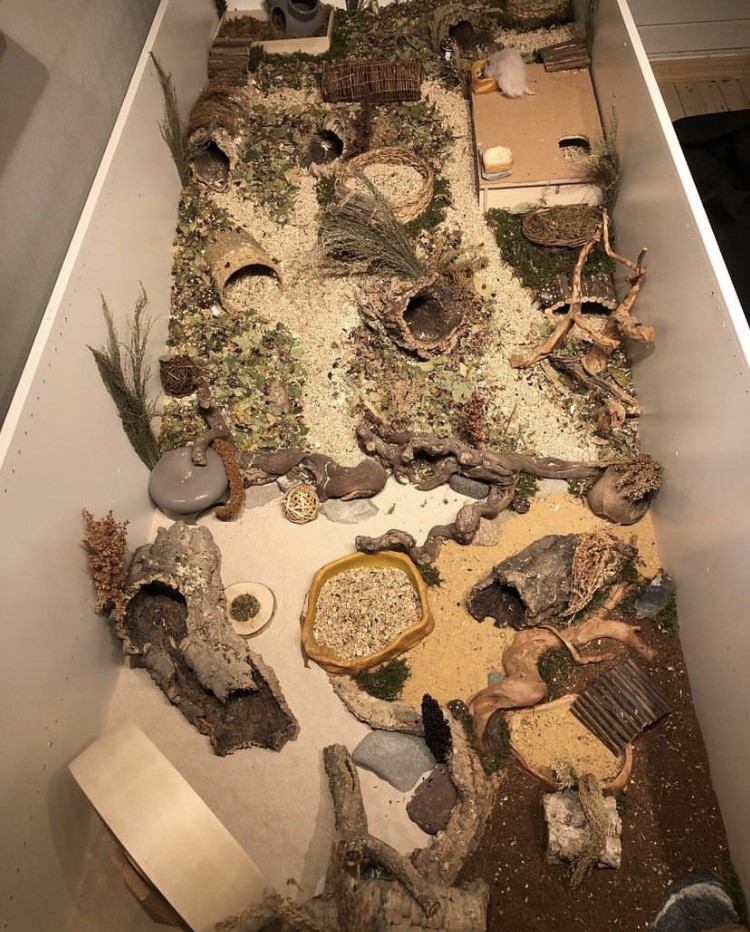Hamsters are adorable and playful creatures that have become popular pets in many households. As a hamster owner, it is your responsibility to provide them with a safe, enriching, and comfortable living environment. A well-designed habitat not only keeps your furry friend happy and healthy but also allows you to bond with them.
In this comprehensive guide, we will explore the essential aspects of building the best hamster habitat, ensuring that your tiny companion thrives.
>> READ MORE:
- Unlocking the Heart of Your Tiny Companion How to Get Your Hamster to Like You
- The Art of Hamster Happiness A Comprehensive Guide to Creating a Thriving Habitat
- The Adorable World of Hamsters An Overview
- Finding the Perfect Pocket Pal A Guide to the Best Hamster Breeds
Choosing the Right Habitat: Essential Considerations for Your Hamster’s Home

The first and most crucial decision to make when creating a hamster habitat is selecting the right cage. With so many options available on the market, it can be overwhelming to choose the perfect one for your hamster. However, considering a few key factors can help you make an informed decision.
Space and Size: Providing Ample Room for Your Hamster to Thrive
The size of the cage is perhaps the most critical factor to consider when choosing a habitat for your hamster. It directly affects their physical and mental well-being. Unfortunately, many starter cages advertised as suitable for hamsters are often too small and may result in health issues. As a general rule of thumb, bigger is always better when it comes to a hamster’s home.
According to experts, a single hamster needs a minimum of 800 square inches of floor space. This allows them to move around, exercise, and exhibit natural behaviors like burrowing and climbing. However, if you have multiple hamsters, it is best to consider a larger cage to prevent overcrowding and potential conflicts.
When considering the size of the cage, also keep in mind that hamsters need ample vertical space. They love to climb, so a taller cage with ramps and platforms can provide them with additional opportunities for exercise and exploration.
To give you an idea of the recommended size for different types of hamsters, here is a breakdown:
| Hamster Type | Minimum Cage Size (in square inches) |
|---|---|
| Syrian | 800+ |
| Dwarf | 450+ |
| Roborovski | 350+ |
Cage Materials and Safety: Ensuring a Secure and Non-Toxic Environment
The material of the cage is another crucial consideration. It not only affects the durability and ease of cleaning but also plays a significant role in your hamster’s safety.
Wire Cages
Wire cages are the most common type of hamster habitat and can be found in various sizes and shapes. They offer good ventilation and visibility, allowing you to keep an eye on your pet at all times. However, they can be noisy, especially if your hamster enjoys chewing on the bars. This can cause disturbance and stress for both you and your hamster.
When choosing a wire cage, ensure that the bars are made of sturdy metal and spaced close enough to prevent escape. The recommended spacing is ¼ inch or less for Syrian hamsters and ½ inch for dwarf hamsters.
Plastic Cages
Plastic cages are an excellent alternative to wire cages, as they are quieter and generally easier to clean. They also come in a variety of fun designs and colors. However, some plastic materials may not be safe for your hamster, so it is important to do your research before purchasing.
Look for cages made from non-toxic plastics, such as polypropylene or polycarbonate. Avoid cages made from soft or brittle plastic, as they can easily break or be chewed through by your hamster.
Another thing to consider with plastic cages is proper ventilation. Some models come with multiple levels and compartments, which can limit airflow and create a stuffy environment for your hamster. Ensure that the cage has sufficient air holes or mesh panels to provide fresh air circulation.
Glass Tanks
Glass tanks are a popular option for hamster habitats, especially for owners who want a spacious and visually appealing home for their pet. They allow for easy customization and provide a clear view of your hamster’s activities. However, they can be heavy and difficult to clean, especially if you have a larger tank.
When choosing a glass tank, ensure that it is made of tempered glass and has a secure lid. The lid should have proper ventilation and be escape-proof to prevent your hamster from getting out. You may also want to consider adding some substrate on the bottom of the tank to provide comfortable bedding for your hamster.
Hybrid Cages
Hybrid cages combine features of different materials, offering a balance of pros and cons. For example, some models come with a wire top and plastic bottom, providing both good ventilation and noise reduction. Others have a plastic base with a wire top, allowing for easier cleaning and more creative design options.
When choosing a hybrid cage, make sure that the materials used are safe and sturdy. Check for any potential hazards, such as sharp edges or gaps where your hamster could get stuck. It is also recommended to choose a model with a deep base to prevent bedding from spilling out.
Essential Accessories: Enhancing Your Hamster’s Enrichment and Comfort

A well-designed habitat not only provides ample space for your hamster to move around but also includes essential accessories to enhance their physical and mental well-being. Here are some must-have items for a perfect hamster habitat:
Bedding
Bedding is an essential component of a hamster’s habitat. It serves as their bedding, food storage, and even bathroom. Choosing the right type of bedding is crucial, as it directly affects your hamster’s health.
Avoid cedar and pine shavings, as they contain harmful chemicals that can irritate your hamster’s respiratory system. Instead, opt for bedding made from aspen wood or paper-based materials. These are safe and non-toxic options that also provide good absorbency.
Wheel
Hamsters are active creatures and need a way to burn off their energy. A wheel is an essential accessory that provides them with the necessary exercise. It also helps keep your hamster mentally stimulated and prevents boredom.
When choosing a wheel, make sure it is large enough for your hamster to run comfortably without arching their back. For Syrian hamsters, the recommended wheel size is at least 8 inches in diameter, while dwarf hamsters can do well with a 6.5-inch wheel.
Opt for a solid-surface wheel over wire or mesh wheels, as they can cause injuries to your hamster’s feet. Also, avoid plastic wheels with spokes, as they can get their limbs caught in between.
Hideouts and Tubes
Hamsters are burrowers by nature, and providing them with a hideout or tunnel system satisfies their natural instincts. You can find a variety of hideouts and tubes on the market, from simple wooden houses to elaborate colorful tunnels.
When choosing hideouts and tubes, ensure that they are made of safe materials and have enough space for your hamster to move around comfortably. Avoid plastic tubes, as they can be easily chewed through, and sharp edges can cause injury.
Toys and Chews
Toys and chews are not just for dogs and cats. Hamsters also need mental stimulation and something to gnaw on to keep their teeth healthy. Wooden chew toys, tunnels, and puzzle feeders are great options for keeping your hamster entertained and engaged.
When selecting toys, avoid small plastic pieces or anything that can easily break apart, as these can be choking hazards for your hamster. Stick to items made from safe and natural materials.
Maintaining a Clean and Healthy Habitat: Regular Cleaning and Maintenance

A well-maintained habitat is crucial for your hamster’s health. A dirty cage can lead to bacterial growth, respiratory issues, and other health problems. Proper cleaning and maintenance not only ensure your hamster stays healthy but also extends the life of their habitat.
Spot Cleaning
Spot cleaning refers to removing any soiled bedding or uneaten food from your hamster’s cage on a daily basis. This should be done using a small dustpan and brush or a handheld vacuum to avoid disturbing your hamster too much.
It is also recommended to scoop out any wet spots in the bedding and replace them with fresh bedding. This will help keep the cage smelling fresh and prevent bacteria from growing.
Deep Cleaning
Deep cleaning should be done at least once a week, depending on the size of the cage and the number of hamsters you have. This involves completely emptying the cage, washing it with mild soap and water, and drying it thoroughly before adding fresh bedding.
While deep cleaning, inspect the cage for any signs of wear and tear, such as loose wires or chewed areas. Replace any damaged parts to ensure your hamster’s safety.
Cage Placement
The location of your hamster’s cage is also essential in maintaining a clean and healthy habitat. Avoid placing the cage in direct sunlight or near sources of heat, as this can cause overheating and discomfort for your hamster.
Also, keep the cage away from high-traffic areas or loud noises, as this can stress out your hamster. Ideally, place the cage in a quiet and peaceful corner of the room, where your hamster can feel secure.
Best Hamster Habitats on the Market: A Review of Popular Options

Now that we have covered all the essential aspects of creating the perfect hamster habitat, here are some popular options available on the market.
Prevue Pet Products 528 Universal Small Animal Home
The Prevue Pet Products 528 Universal Small Animal Home is a wire cage with a deep plastic base, providing a balance of ventilation and noise reduction. It has two levels and comes with essential accessories, such as a platform, ramp, and hideout. The wire spacing is also small enough to prevent escape. However, the cage may be a bit small for Syrian hamsters.
Kaytee CritterTrail Extreme Challenge Habitat
The Kaytee CritterTrail Extreme Challenge Habitat is a plastic cage with multiple compartments and tubes, providing your hamster with plenty of space to explore. It also comes with a wheel, water bottle, and food dish. However, the plastic material may not be as durable as other options, and the tubes can be challenging to clean.
Ferplast Favola Hamster Cage
The Ferplast Favola Hamster Cage is a hybrid cage that combines a wire top with a plastic bottom. It is spacious, easy to assemble, and has good ventilation. It also comes with a water bottle, food dish, and hideout. However, the wire spacing may be too large for dwarf hamsters, and some users have reported issues with the door latch.
Conclusion

Creating the perfect habitat for your hamster requires careful consideration of their size, needs, and safety. Remember to choose a cage with ample space, safe materials, and essential accessories. Regular cleaning and maintenance are also crucial in keeping your hamster healthy and happy. With this comprehensive guide and recommended options, you are now equipped to provide your furry friend with the best possible living environment.

